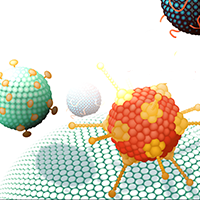Addressing the Challenges of Commercial-Scale Viral Vector Production
Cell Gene Therapy Insights 2018; 4(2), 31-36.
10.18609/cgti.2018.004
What are the most substantial challenges faced by manufacturers of clinical and commercial viral vectors today?
Existing manufacturing methods for gene therapy vectors are satisfactory for meeting market demands of rare or ultra-rare diseases that have a relatively small number of patients in need. However, when addressing more common diseases with gene therapy approaches, such as Alzheimer’s, Parkinson’s or rheumatoid arthritis, bottlenecks in manufacturing arise during late stage clinical trials and particularly when entering the market. At the moment, it is feasible to manufacture enough material for Phase 1 or 2 clinical trials, but once Phase 3 is reached, it is extremely challenging to yield enough product with current manufacturing methods.
Generally, current production methods for viral vectors use adherently growing cells and transient transfection, which is a very tedious and manual process. This method only allows for scale out but not for scale up. This means that the substrate-dependent growth of the cells requires multiplying the number of cell factories and personnel to produce more vectors. One way to address this issue is to use suspension cells which can be grown in bioreactors of increasing capacities. Unfortunately, using standard suspension cells can lead to relatively poor efficiency and reproducibility during transient transfection. This issue is one of the major challenges at the moment and it is referred to as the ‘production gap’ by industry experts in the field.
What approaches are you taking to address these scale up challenges?
To address the challenges arising with scale up, we have developed a cell suspension system, based on our proprietary CAP-GT technology, that makes the cells easier to handle and much more efficient at viral vector production compared to standard HEK293 cells. Our CAP-GT suspension cells grow to a very high density and are easily adaptable to all current bioreactor formats. Even more important, these cells can be easily and highly efficiently transfected using standard methods. Accordingly, CAP-GT cells make transient production of viral vectors much easier and they are much more scalable than the HEK293-based systems.
When using a transient system for viral vector manufacturing, high amounts of DNA, preferably in GMP quality, must be supplied. This poses an additional challenge, adding cost and variability to the production process. For these reasons, we have put a lot of effort into the development of a stable production process of viral vectors in addition to the further development of our transient system. The stable production process based on our CAP-GT technology eliminates the transient transfection step and for production of adeno-associated viruses (AAV) does not depend on the infection with helper viruses, such as adenovirus or herpes virus, which is required for other stable AAV production systems. The goal is to develop a process very similar to the established protein or antibody manufacturing process through use of our viral packaging cells. In the first step, the gene-of-interest is stably transfected into the viral packaging cells. A suitable clone is then selected and subsequently expanded to the desired production volume. As a final step, viral vector production is chemically induced. We see this process as the best solution for efficient and reproducible viral vector production.
Is there any initial data you can share about the impact of the new process on vector production efficiency or cost of goods?
We are still analyzing the precise cost saving benefits of our process, but we do have some information on efficiency compared to the current manufacturing methods that we are able to share. When comparing yields of our transient production system to the HEK293 cells, we see that results vary depending on the vector being used. Our system either matches titers produced with HEK293 cells, or exceeds them 2- to 10-fold. This means that there is a clear potential to reduce cost of goods by the same amount.
Production using our packaging cells is a more recent development and we are now in the phase of collecting comparison data. What I can share today, is that titers achieved with these cells exceed titers from the transient production system. Once the stable production process is optimized, we expect even higher titers.
Adenovirus, lentivirus and adeno-associated virus (AAV) can all be considered dangerous when replication competent. What steps can be taken in the production of vectors to prevent virus competency?
To avoid the production of replication competent viruses, genes that are necessary for the functionality of the virus are separated and located on three or four different plasmids, which cannot recombine with each other. This method is used for AAV and lentivirus and ensures that no replication competent virus is reconstituted.
Avoiding the formation of replication competent viruses in the production of adenoviruses is slightly more complex. Typically, only the E1 gene sequence region, which is essential for adenovirus replication, is deleted in the vector. E1 genes need to be present in production cell lines to successfully produce functional adenovirus vectors. Usually, such as in HEK293 cells, the E1 region is included within the genome of production cells in the same configuration as it is within the wild type adenovirus genome. This setup bears the risk of unwanted homologous recombination events taking place, such that the E1 region is added back into the viral vector giving rise to replication competent adenoviruses (RCAs). Production of RCAs is a big concern, which we took into account when developing CAP-GT cells.
To avoid RCAs formation, the CAP-GT cells include the E1 gene sequence region in a different configuration than the wild type adenovirus. The genes are still functional, but the flanking regions are different, preventing homologous recombination. We have tested this system and have successfully produced functional adenovirus vectors without any RCAs. This is one of the main reasons why our customers in this field switched from using HEK293 cells to the CAP-GT system.
What are the critical quality requirements and regulatory milestones when manufacturing viral vectors?
The quality requirements mostly depend on the individual products. The absence of replication-competent virus particles is obviously one quality criterion. Product type, potency, safety risks and production platform will all factor into the requirements. It is important to understand your production platform very well and identify any inherent risks to avoid contaminations with viruses or other pathogens.
When generating CAP-GT cells and establishing a production platform, we ensured that the history of the development of all included cell lines was fully recorded from the beginning. The platform and the different cell lines were created for use in industrial settings where detailed documentation is of utmost importance. It is impossible to trace the history of traditional viral vector production cells like HEK293, which have been around for a very long time. By contrast, every single cultivation step and all materials that have been in contact with the CAP-GT cells have been documented. We took great care to use materials that were animal component free and had the required certificates stating TSE-free origins. Using TSE-free materials eliminates the risk of introducing undesirable prions into the cultures. Overall, the cells were tested negative for any pathogens that we, the European Medicines Agency (EMA), or the US Food and Drug Administration (FDA) were able to think of. In addition to documenting the entire development process of the CAP-GT cells, we have also documented the extensive testing of the platform. All this information has been deposited as a biologics master file with the FDA. Our meticulous documentation standards have made the CAP-GT platform one of the best characterized cell systems available today.
In 2016, Cevec announced a collaboration agreement with the Beckman Research Institute at the City of Hope to use CAP-GT technology. How did the partnership come about?
The City of Hope produces viral vectors according GMP standards for researchers within their own clinical research centers, for other academic customers and for small industrial customers. They were reluctant to accept projects where they were asked to generate adenoviral vectors because the production system they were using at that time had an inherent risk of generating RCAs. When they learned about the CAP-GT platform, they approached us and have since been working with our CAP-GT cells. It has been a very good collaboration due to the extensive and detailed scientific exchange on experiments performed.
What are the core objectives with respect to further developing the CAP-GT technology over the next 5 years?
We will definitely be focusing on establishing our CAP-GT suspension platform as the industry standard for scalable viral vector production. Although I think transient production will stay the main production platform for the moment, my personal feeling and hope is that within the next 1–2 years it will increasingly be replaced by our stable production systems.
We’re looking at other opportunities in other areas, as well. One promising proposition that has loosely been connected to gene therapy, is the therapeutic use of exosomes. We are currently working with a few partners who are investigating a therapeutic use of exosomes, such as targeted drug delivery. The first results with CAP-derived exosomes are really promising. It’s unclear if exosomes will in fact be used in therapeutics, but in a way, they are less risky than viral vectors. There is a lot of potential in this field and we’re excited to contribute with our innovative solutions to the future success of exosome-based applications.
Affiliation
Dr Nicole Faust
CEO and CSO, CEVEC Pharmaceuticals GmbH,
Gottfried-Hagen-Str. 60-62, D-51105 Köln, Germany
faust@cevec.com
This work is licensed under a Creative Commons Attribution- NonCommercial – NoDerivatives 4.0 International License.


